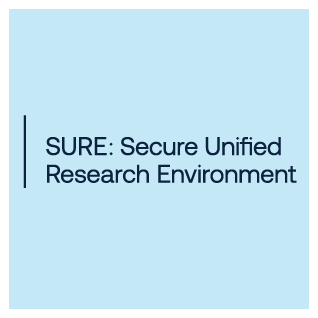
Researchers need access to health data to innovate. The public needs to know their data is safe. How to balance both? Two Sax Institute initiatives are showing the way forward in data collection and protection.
We’re living in an age of rich health and medical data that has the potential to save lives, and never before have we shared so much of our personal health information with governments and researchers. The possibilities for health breakthroughs are astounding.
But this abundance of data comes with risks and news of breaches don’t exactly build public trust. In fact, according to a 2018 ANUPoll survey of more than 2,000 Australian adults, Australians reported a high level of support for government to use and share data, but they were less confident that the government has the right safeguards in place or can be trusted with people’s data.
In a rapidly changing data environment, researchers and healthcare providers need to keep up with the ongoing challenge of balancing health research with individual privacy considerations. And with the right technology and controls, there are ways to securely manage data collection and protection.
Balancing access and privacy
One example is the Sax Institute’s Secure Unified Research Environment (SURE) – a remote access computing environment that allows researchers to log in and analyse de-identified data from sources such as hospitals, general practice and cancer registries.
SURE protects the confidentiality and privacy of research data by giving researchers access to the data through virtual workspaces on their own computers, but without letting record-level data leave the system.
This is achieved through security controls such as reviewing all information leaving or entering the environment, separate workspaces for individual projects, and multifactor authentication for all users that ensures only approved researchers with genuine projects of public benefit can access and use the data.
Building data (and trust)
What about research participants? While studying large numbers of people can provide a critical picture of the nation’s health, creating and maintaining large data sets takes time and trust.
The Sax Institute’s 45 and Up Study is the largest ongoing study of healthy ageing in Australia, comprising more than a quarter of a million people. 45 and Up is unique because participants not only consent to being resurveyed once every five years, their deidentified information is only released for research through SURE.
This means that 45 and Up data and any linked datasets stay in a highly-controlled, secure environment where researchers can remain confident that all data is ethics-approved, and study participants know their information is kept confidential.
Establishing this two-way flow of information is essential for building trust between researchers and the public, and these platforms illustrate there are ways to protect privacy, while safely powering life-changing research.
Find out more
- See what researchers say about their experiences using SURE
- Read about the diverse range of 45 and Up research projects
- Sign up to the Evidence Matters newsletter to stay up-to-date on our latest research news




